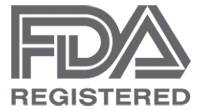Implement FDA Design Controls: How to Streamline Your Device’s Market Entry

FDA design controls are not just regulatory requirements but practical tools that can significantly enhance the safety, efficacy, and market readiness of your medical devices. By implementing the design controls outlined in 21 CFR Part 820.30 and harmonizing them with ISO 13485 clause 7.3, you can ensure compliance, reduce risks, and streamline your pathway to market. This article delves into the benefits of robust FDA design controls and offers strategies for navigating the regulatory landscape to expedite your device’s market entry.
Introduction to FDA Design Controls
Importance and Overview
FDA design controls provide a structured framework for product development that ensures safety and efficacy. By systematically addressing design inputs, outputs, verification, validation, and risk management, design controls help identify and mitigate potential issues early in the development process. This detailed approach significantly reduces the likelihood of costly development and regulatory delays, enhancing product safety and quality.
Key Terms
FDA Design Control: Regulatory requirements under 21 CFR Part 820.30 that medical device manufacturers must follow to ensure their products are safe and effective. These controls involve systematic processes for planning, design inputs, design outputs, verification, validation, and risk management throughout the product development lifecycle.
ISO 13485 Design Control: Design and development requirements specified in the ISO 13485 standard, an internationally recognized quality management system (QMS) for medical devices. Clause 7.3 of the standard outlines a comprehensive framework for managing design processes to ensure consistent product quality and regulatory compliance across global markets.
21 CFR Part 820.30: The exact section of the Code of Federal Regulations addressing design controls within the FDA’s Quality System Regulation (QSR). It mandates that manufacturers establish and maintain procedures to control the design of medical devices to ensure that specified design requirements are met.
Recent Advances and Their Impact
Recent advancements in regulatory frameworks and technological developments have significantly impacted the implementation of FDA design controls. Incorporating AI and machine learning in medical device design and manufacturing necessitates evolving regulatory guidelines to address new risks and validation methods. These technologies analyze vast amounts of data to identify patterns and predict outcomes, enhancing the ability to anticipate potential design flaws early in the development process, thereby streamlining compliance and expediting market entry. Additionally, 3D printing technology has revolutionized prototyping and manufacturing by enabling rapid iteration and customization but requires stringent controls to ensure consistency and quality. The flexibility of 3D printing also allows for on-demand production, reducing lead times and inventory costs while maintaining high standards. However, integrating technologies like AI or 3D printing into device design and manufacturing requires adherence to rigorous validation and verification protocols to ensure accuracy and reliability.
A common misconception is that FDA design controls are overly burdensome and delay market entry. When properly implemented, these controls provide a clear roadmap for compliance, reducing the likelihood of costly delays due to non-compliance. Adhering to these requirements from the outset can accelerate the development process and facilitate a smoother path to market. Misunderstanding the purpose and scope of design controls can lead to inadequate implementation and potential regulatory setbacks. Viewing these controls as mere checkboxes rather than integral components of the design and development process results in superficial compliance. To avoid this pitfall, companies must cultivate a culture of quality and compliance, treating design controls as essential tools for achieving product excellence.
Understanding FDA Design Controls
Definition and Purpose of FDA Design Controls
As defined under 21 CFR Part 820.30, FDA design controls are quality system regulations that govern the development of medical devices. These controls ensure devices are safe and effective for their intended use by requiring a systematic approach to design and development activities. This involves comprehensive planning, identifying and addressing risks, verifying that design outputs meet design inputs, and validating that the final product meets user needs and intended uses.
The necessity of FDA design controls lies in their crucial role in preventing design flaws that could compromise device safety and efficacy. Enforcing a structured design process, these controls help manufacturers identify and mitigate risks early, ensuring the final product is compliant and reliable. The impact of FDA design controls on safety outcomes is significant. They provide a framework for continuous risk management, crucial for addressing potential safety issues before they result in harm. For example, during the design verification phase, rigorous testing and analysis ensure the device performs as intended under all expected conditions. This practical approach helps identify and correct issues that could lead to device malfunctions or failures in the field.
Effective strategies for aligning design control processes with FDA expectations, particularly for novel or high-risk devices, include early and continuous engagement with regulatory bodies, incorporating robust risk management practices, and leveraging industry guidance and standards. By investing in training and resources to ensure your teams are well-versed in regulatory requirements and best practices, you can further enhance your preparedness and feel capable in this process.
Proactive engagement with the FDA is not just a suggestion but a crucial step that can significantly expedite the approval process, especially for innovative or high-risk devices where the regulatory pathway may be less clear. This collaboration provides invaluable insights and feedback, guiding the development process and ensuring your design meets regulatory expectations. It’s a strategic move that can give your device a competitive edge in the market.
The Design Control Process: A Step-by-Step Guide
Initial Planning and Design Inputs
The initial planning phase is crucial for establishing a solid foundation for device development. This phase involves defining specific, measurable, and testable design inputs based on user needs, regulatory requirements, and risk assessments. Critical elements often overlooked during initial planning include comprehensive risk assessments, user needs, and intended use considerations. Overlooking these aspects can lead to compliance issues and design flaws that may necessitate costly redesigns.
Companies can better anticipate and incorporate user needs by engaging with end-users early in the development process, conducting thorough market research, and leveraging human factors engineering principles. Engaging with key stakeholders, including clinicians, patients, and regulatory experts, provides valuable insights that inform design inputs and ensure the device addresses real-world needs.
Design Outputs and Verification
Design outputs derived from established inputs must be documented and verified to meet specified requirements. Verification methods include testing, inspections, and reviews to ensure alignment with design requirements. Effective verification methods, such as simulation, modeling, and iterative testing, predict device performance under various conditions and allow early detection and correction of issues. Companies must actively monitor regulatory updates, engage with industry groups, and maintain flexibility to incorporate new requirements promptly, ensuring that design outputs meet design inputs through thorough testing and analysis.
The verification phase ensures the design outputs meet the design inputs. This involves thorough testing and analysis to confirm that the device performs as intended. Standard verification methods include bench testing, where the device is tested in a controlled laboratory environment, and clinical simulations, where the device is tested in conditions that closely mimic real-world use.
Changes in regulatory standards can significantly impact the verification process. Companies must stay informed about evolving requirements and be prepared to adjust their verification methods accordingly. This may involve updating testing protocols, incorporating new technologies, and revising documentation to ensure compliance with the latest standards.
Finalizing Design: Validation and Transfer
Design validation ensures the final device meets user needs and performs as expected in real-world scenarios. Common challenges include inadequate user feedback and non-representative testing environments. For example, a device intended for use in emergencies must be tested in conditions that replicate the stress and urgency of such situations. Involving end-users, such as clinicians and patients, in validation activities can provide valuable feedback and help identify potential issues early.
The design transfer phase involves translating the design specifications into production processes, ensuring the device can be manufactured consistently and reliably. Critical considerations for this phase include thorough documentation of design specifications, including detailed drawings, material specifications, and manufacturing instructions. Training production personnel on these documents ensures consistency and reliability in manufacturing and ongoing verification of production processes to prevent deviations.
Streamlining the Process Using Technology
Leveraging Quality Management Systems (QMS)
Quality Management Systems (QMS) are essential for managing compliance with FDA design control and ISO 13485 requirements. Their harmonization simplifies the integration of FDA and ISO 13485 requirements, reducing potential pitfalls. A harmonized documentation strategy and a unified risk management framework, such as ISO 14971, streamline processes and ensure consistency. Implementing robust change control and providing comprehensive training further facilitate seamless integration, ensuring both compliance and operational efficiency.
Digital tools have revolutionized the management of QMS by providing real-time data, automating documentation, and facilitating collaboration. These tools can help organizations streamline design control processes, reduce manual errors, and ensure all activities are documented and traceable. For example, electronic document management systems (EDMS) can automate design document creation, review, and approval, ensuring that all changes are tracked and auditable.
Common Pitfalls and How to Avoid Them
Typical Implementation Challenges
Implementing FDA design controls can be challenging. Issues such as inadequate initial planning, poor documentation practices, and lack of stakeholder engagement can lead to non-compliance, delays, and increased costs. Specific examples are insufficient risk assessments, vague design inputs, and ignoring user needs.
To overcome poor documentation, establish clear protocols, train staff on best practices, and use digital tools to automate processes. Comprehensive and accurate documentation is essential for compliance and audits. Inadequate planning can cause significant issues, such as safety problems requiring redesign and misaligned outputs needing costly revisions. Address these challenges by adopting a proactive planning approach, incorporating thorough risk assessments, precise design inputs, and regular stakeholder engagement. Form cross-functional teams from design, engineering, regulatory, and quality departments to ensure all aspects are thoroughly considered and documented.
Ensuring Ongoing Compliance
Maintaining compliance with 21 CFR Part 820.30 and ISO 13485 clause 7.3 throughout the device lifecycle requires ongoing vigilance and regular updates to the design control process. Continuous compliance can be achieved through regular audits, training, and updates to the QMS to reflect changes in regulatory requirements and industry best practices. Effective auditing practices include conducting internal audits regularly, engaging external auditors for unbiased assessments, and using audit findings to drive continuous improvement. Auditing management software can help organizations maintain and demonstrate compliance by providing a structured approach to audit planning, execution, and follow-up.
Conclusion
Implementing FDA design controls is essential for streamlining market entry and ensuring the safety and efficacy of medical devices. Companies can navigate the regulatory landscape efficiently by understanding requirements, harmonizing with international standards, and leveraging technology. Prioritizing FDA design controls enhances compliance and supports the development of high-quality, reliable products that meet user needs and regulatory expectations. By integrating best practices, leveraging technology, and maintaining a commitment to quality, companies can streamline market entry and achieve long-term success in the medical device industry.



